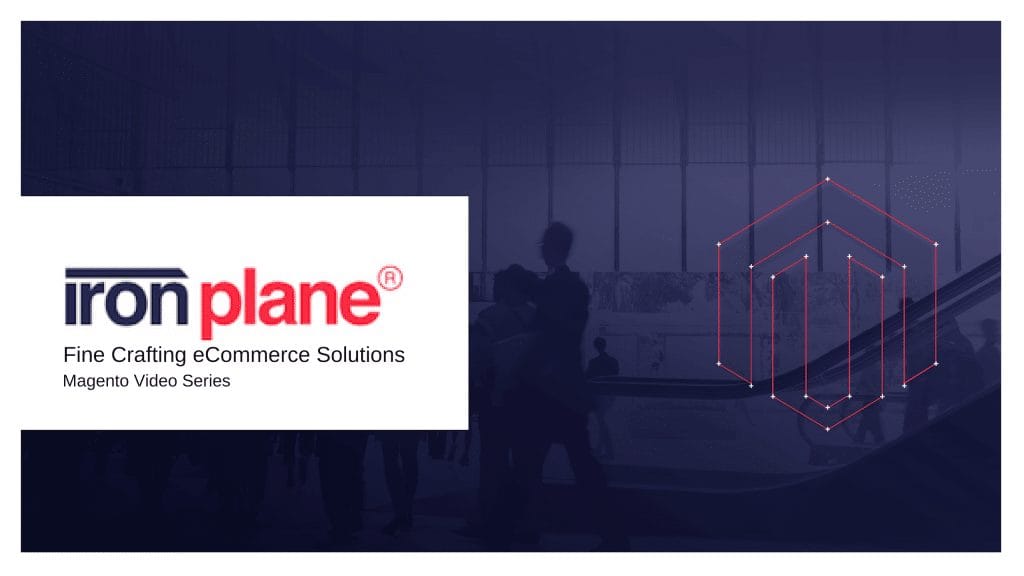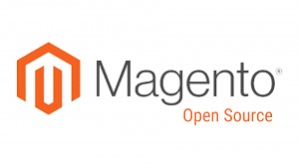
Even as foot traffic at brick-and-mortar stores has declined over the past few years, eCommerce sales continue to boom. Black Friday weekend sales broke records in 2018, with total online spending reaching $6.22 billion on Black Friday and $7.9 billion on Cyber Monday, an increase of more than 19% over records set in 2017. Retail eCommerce sales in the United States are projected to grow from just over $500 billion in 2018 to $735 billion in 2023.
This growth represents a major opportunity for existing eCommerce businesses and newcomers alike. However, retailers who fail to build websites that are fully optimized and well-designed are likely to miss out on some of the opportunities created by this growth. Make sure to follow these steps for how to build an effective eCommerce website.

If you are wondering how to build an eCommerce website, you probably already have a product in mind. However, you will also want to do some research before launching your eCommerce site. You will want to make sure your product is viable and set appropriate pricing.
First, conduct market research to make sure there is a base of potential consumers for your product. Determine whether there is an existing market and, if so, whether your product will be able to break in and compete in the market based on pricing, quality, or unique features. If there is no existing market, make sure your product will be attractive and useful for potential customers.
Once you have determined that there is a viable market for your product, figure out your target audience. You will want to learn more about where and when your potential customers prefer to do their shopping, what they can afford, and what they are willing to spend.
This market research will, in turn, help you set pricing. This step is critical and often overlooked. If you set your price too high, you might not sell enough of your product to create a viable business. Conversely, if you set your price too low, you might sell more items but risk not bringing in enough revenue to make a profit or break even. Either way, you risk tanking your business and losing money on the endeavor.
To determine what pricing scheme makes sense for your products, you will need to determine the total cost of selling each unit. This includes the cost of producing each product, as well as the cost of website hosting, taxes, shipping costs, the percentage deducted by credit cards or other payment systems, marketing costs, and the amount you would like to earn and pay your employees.
Prices should also reflect what your potential consumers are willing and able to pay for the product. They should also take into account the prices that competitors are charging for similar products. You may have to adjust your pricing at the margins to make sure your products are competitive in your target market.
File the Paperwork
Once you have created a viable business plan, you must file paperwork to officially create your business. This will include filing registration documentation and applying for a vendor’s license, as well as looking into potential legal business issues. Contact a local attorney specializing in business law to help you through this process. While this will create an upfront cost, it will save you a lot in the long run, both in terms of time and issues that might arise down the road.
With the help of your attorney, you will need to decide the state in which you would like your business to be domiciled. Because each state has different requirements, you will need to check with the office of the Secretary of State as well as the state’s department of revenue or taxation to determine the requirements for new businesses.
Register the relevant articles of incorporation or organization with the Secretary of State, whether you are starting a corporation, limited liability company, or nonprofit. You will also need to apply for a vendor’s license or seller’s permit from the relevant state agency if you are making taxable sales. Many vendors will require you to have this permit before they agree to work with you, so it is helpful to get the paperwork straightened out in advance.
Select an eCommerce Platform
Once your business plan and documentation are in order, the next step is figuring out how to create an eCommerce website. First, you will need to select an eCommerce platform. Working from an eCommerce platform will make it easy to add elements you need for your site. These can include a shopping cart, payment platforms, and shipping management software. It will also ensure that you can work from existing templates and integrations rather than starting completely from scratch.
While a variety of platforms exist to provide different benefits, we recommend Magento. Magento offers a number of advantages, including:
- Flexible pricing: Magento allows you to create flexible pricing rules that adjust for promotional offers, coupons, and more, making marketing easy.
- Mobile commerce: eCommerce customers increasingly prefer to complete transactions on their smartphones or other mobile devices. Magento provides the tools to create mobile-optimized versions of eCommerce sites to improve customer experience and up your conversion rates.
- Integration: Magento allows for the integration of a wide variety of third-party services, from payment gateways to newsletter marketing platforms.
- Security: Data security is more important than ever for eCommerce customers. Magento allows you to implement a number of security measures. These include a secure URL, tools that automatically check your site for security breaches and install malware patches, secure checkout features, and much more.
- Social shopping: Online shopping has become a social experience. Cutting-edge online stores offer features such as the ability to rate products and write reviews. Consumers can also share products with friends via email or social media, and create registries and wish lists. Magento provides tools to implement these features through its flexible merchandising engine.
- International support: Magento is able to provide multiple versions of a site to support multiple languages and currencies. This allows you to operate in markets across the globe easily and efficiently.
Design Your Store
If you want to launch your site over a relatively short period but with a professional look and feel, it is easiest to work with a developer. Again, while this represents an upfront cost, it will significantly lower your costs and raise revenue in the long run by making sure your site is user-friendly and has a professional interface. It will also save you the time, hassle, and money involved in learning these skills yourself or hiring an in-house team.
A good development team will have knowledge about best practices for building a user-friendly site that will drive conversions and maximize revenue. Professional developers can also help you select a professional-looking theme, useful plugins, integrations, and more.
Screen your preferred team of developers before hiring them to make sure they have experience building eCommerce sites on your preferred platform. Get references from other eCommerce sites built by the developer. Be sure to speak with those companies to learn what it was like to work with the developers. You will also want to meet with the developers in advance to learn about the services they offer and their anticipated timeline for completing your project.
IronPlane is a leading U.S.-based, certified Magento full-service agency with 10-plus years of experience. IronPlane’s development team provides programming and customizable solutions for B2C and B2B eCommerce businesses on the Magento platform. IronPlane’s Magento developers have earned awards and recognition for their front- and back-end programming. In addition to eCommerce site development, IronPlane offers assistance with migrating to the Magento platform for existing eCommerce websites, cloud Magento hosting, and code review speed optimization. Book a free consultation appointment with us today to learn more about the custom solutions we can provide for designing your eCommerce store.
Optimize for SEO
Once you have designed and determined how to create an eCommerce website, there are several best practices to follow to optimize your site for SEO. This will help grow your store’s visibility in organic (or nonpaid) search engine results.
- Keyword optimization: Optimizing your site for keywords will help ensure that your site ranks higher when internet users search for that keyword. Optimizing a page means making sure your keywords are included in strategic locations. Locations include the page title, headers, image file names, meta titles, and URLs, as well as in paragraph copy. URLs should include real words rather than gibberish letters and numbers wherever possible to make them more user-friendly. This has the added benefit of helping raise your click-through rate. However, Google’s algorithm now penalizes keyword stuffing, so make sure you place keywords in high-quality content.
- Site structure: An intuitive site architecture can increase a website’s SEO rankings as well as its usability and conversions. Large eCommerce sites with several products can also easily become confusing and difficult to navigate without a solid architecture. To optimize for SEO, a site should aim for a “flat architecture.” This means it requires as few clicks as possible to navigate from the main page to a product page. Advance planning will also make it easier to add new products to the site structure.
- Mobile version: Mobile sites that do not run smoothly can damage SEO rankings. eCommerce sites should include a responsive, mobile-friendly design. This will help to improve the site’s search ranking.
- Social media integration: Social media links to your site create social signals. This, in turn, demonstrates to Google that users find your website valuable. Grow your social media links by adding social buttons to your product pages. This has the added benefit of creating marketing for your brand and driving new users to your site.
- Add keyword-rich content: Adding valuable content such as a blog or reviews is a useful way to incorporate keywords. This will drive users to your site. This type of content can also optimize for additional keywords that are not included on your site’s main page. Make sure this content is high-quality and reader-friendly. This ensures it does not get penalized for keyword stuffing.
The Magento eCommerce platform provides a wide variety of tools and integrations that can help optimize your site for SEO. IronPlane’s development team can help you develop an SEO strategy for your eCommerce site. We can also determine which tools and integrations will be the most useful for your brand.
In addition to SEO, don’t forget other forms of marketing. For example, you can use Magento’s tools to create a sign-up or provide a promotional incentive. This can grow your email marketing list.
Analytics
After you launch, continue to monitor key performance indicators, or KPIs, to fine-tune your site. Cost per acquisition tells you how much you are paying for marketing to attract each new customer. This can tell you whether a channel or marketing campaign is worth your investment. Conversion rates show how many site visitors are actually making purchases. Low conversion rates can point to issues with the usability of your site. Average order value tells you how much your site’s average customer spends on a purchase. It also provides insights into customer behavior and spending.
Keeping track of this data can help you improve your eCommerce site’s design and user-friendliness, therefore increasing revenue. Magento provides a number of tools to help track and visualize your site’s KPIs.
The tremendous growth in eCommerce sales in recent years provides an important opportunity for retailers. This will allow retailers to move online and grow their businesses. It can be intimidating or confusing to know where to start when considering how to set up an eCommerce business. However, working with the right eCommerce platform and the right designers will maximize the returns on your upfront investment by making your eCommerce site as profitable as possible in the short and long run. Contact IronPlane’s team today to learn more about our custom eCommerce solutions.









